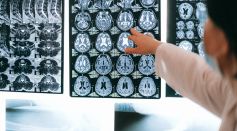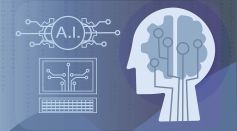Tags: AI

NCyborg Program: Can AI Robots Assist in Stroke Rehabilitation? Neuroscientists Develop Brain-Computer Interface to Find Out
Is China Ready for AI Drone Wars? Unmanned Rockets Can Track Submarines Without Human Input

Neuralink: Can Elon Musk's Brain Chip Implant Create Superhumans?
Photos of Pots and Toasters Help Train New Machine to Track COVID-19

AI Systems Could Soon Predict the Failure of Electronic Devices; How Is It Possible?

Google Artificial Intelligence Can Soon Design Microchips With Greater Speed and Efficiency

AI and Misinformation: How Artificial Intelligence Works on Both Sides

Google's New AI Tool Can Help Diagnose Skin Ailments: How Accurate Is It?

Google's LaMDA AI Can Carry on Natural Conversations, But What's the Point of Talking to a Machine?

Having Weird Dreams? AI-Inspired Hypothesis Explains Why

$3,840 Smart Shoe Helps Blind, Visually Impaired People With Its Ultrasonic Sensors That Avoid Obstacles
Colorectal Cancer Treatment Possible Through Artificial Intelligence Test
AI-Powered Albert Einstein Answers Questions From Fans

Photo Colorizing Tool Uses AI to Create Lifelike Images of Historical Figures

AI Tool Uses Satellite Imagery to Find Pollution Hotspots
![AI Systems Prefer Human Voices Rather Than Binary Codes [STUDY]](https://d.sciencetimes.com/en/full/32936/ai-systems-prefer-human-voices-rather-binary-codes-study.jpg?w=237&h=131&f=30a01e960689724bb750cee1ce7de538)
AI Systems Prefer Human Voices Rather Than Binary Codes [STUDY]

Emojify Shows How AI Emotion Recognition Technology Works and its Implications to Society

MolMapNet: New AI Tool Uses Deep Learning to Predict Pharmaceutical Properties

AI Backpack Helps The Blind Navigate Even Without Canes, Guide Dogs

Artificial Intelligence Can Map How a Brain's Complex Network Works to Understand Sentences
Most Popular

Will Earth's Magnetic Poles Flip Next? Magnetic Pole Reversal Explained Through Cutting‑Edge Magnetosphere Science

How Lightning Science Reveals Why Charged Storms Are Rising with Global Warming Effects

Relativity Time Dilation Explained: The Physics of Time and Why It Moves Differently in Space

De-Extinction vs. Conservation Science: Which Approach Protects Biodiversity Most Effectively?





